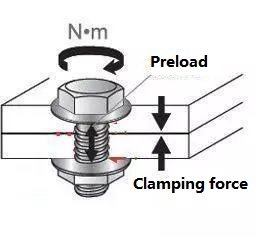
You might be wondering, what exactly is a latch bolt? Typically, it’s a simple mechanism that secures your door when you close it. Whether you have a traditional deadbolt or a modern smart lock, understanding how latch bolts function is crucial. This guide will help you stay one step ahead and ensure your door operates smoothly without those annoying loose parts.
Understanding Latch Bolts: What They Are and How They Work
A latch bolt is a small, but mighty component of your door lock system. It’s the part that slides into the door frame when you close the door, keeping it securely shut. Imagine it like a tiny hook that keeps your door from swinging open at the most inconvenient moments. When you turn the knob or press the lock button, the latch retracts, allowing you to enter or exit.
So, why does this matter? Here’s the thing: if your latch bolt is loose, it can lead to significant security concerns. A loose latch not only makes your door harder to close but might also allow unwanted guests to sneak in. To tackle this, regular maintenance is key. Periodically check your latches to ensure they’re tight and functioning as they should.
Common Causes of Loose Latch Bolts
Several factors contribute to a loose latch bolt. First off, it could be the natural wear and tear over time. Just like your favorite pair of sneakers, things can get a little loose with constant use. Additionally, changes in temperature can cause wood to expand or contract, affecting how your door and latch fit together. A few common causes include:
- Worn screws and hardware
- Improper installation
- Environmental changes
Lastly, you might consider the quality of your latch. Cheaper materials may not hold up as well over time. If you find yourself constantly adjusting your latch bolt, it might be time for an upgrade.
Tools You’ll Need for Maintenance
Before you start, gather a few basic tools. Having the right gear can make the process smoother and save you a lot of time. Here’s a quick list of what you might need:
- Philips and flathead screwdrivers
- A power drill (if replacing hardware)
- Measuring tape
- A level
These tools are typically found around the house, but if not, they’re easily available at any local hardware store. Having them ready ensures you’re not scrambling halfway through your latch bolt maintenance.
Step-by-Step Guide to Tightening Loose Latch Bolts
Now, let’s roll up our sleeves and dive into the repair process. It’s easier than you might think! Here’s how to get your latch bolt back in shape:
1. Inspect the Door and Latch
Start by closely examining the door and latch. Look for any signs of damage or wear. If you notice that the latch bolt itself is loose in the housing, it’s time to fix that. Use a screwdriver to tighten any visible screws on the latch and surrounding hardware.
2. Realign the Strike Plate
Now, check the strike plate—the metal piece on the door frame that the latch bolt slides into. If it’s misaligned, it can cause your latch bolt to be loose. To adjust, simply unscrew the strike plate and reposition it, ensuring it lines up correctly with the latch bolt.
3. Replace Worn Parts
If you notice that screws are stripped or the latch itself seems worn, consider replacing them. Visit your local hardware store to find a suitable replacement. When installing new parts, make sure they’re compatible with your existing lock set.
4. Test the Door
Once you’ve tightened everything, close the door to test the latch. Does it engage smoothly? If not, you may need to readjust the strike plate or check other hardware components. Getting this right can make a world of difference.
Preventative Measures to Keep Latch Bolts Secure
Alright, you’ve fixed your latch bolt; now what? Here are some tips for keeping it secure in the long run:
- Regularly inspect your locks and bolts—make it a part of your seasonal home maintenance.
- Keep your door frames clean and clear of debris to prevent misalignment.
- Apply a bit of lubricant to the latch bolt to ensure smooth operation.
A little attention goes a long way. By being proactive, you can avoid future headaches and maintain your home’s security.
When to Call a Professional
While many loose latch bolt issues can be addressed at home, sometimes it’s best to call in a professional. If you’ve tried tightening or adjusting and still experience issues, it may be a sign of deeper problems, like frame alignment. A locksmith can provide expertise and peace of mind, ensuring your door is as secure as possible.
Preventing loose latch bolts is all about awareness and maintenance. Just like keeping your car in good shape requires regular check-ups, your doors and locks do too. By understanding how latch bolts work and taking simple, proactive steps, you can ensure that your home stays safe and secure.
Remember, a little bit of effort can prevent bigger problems down the road. So the next time you notice a loose latch bolt, you’ll know exactly what to do and how to keep that door guarded. Happy securing!